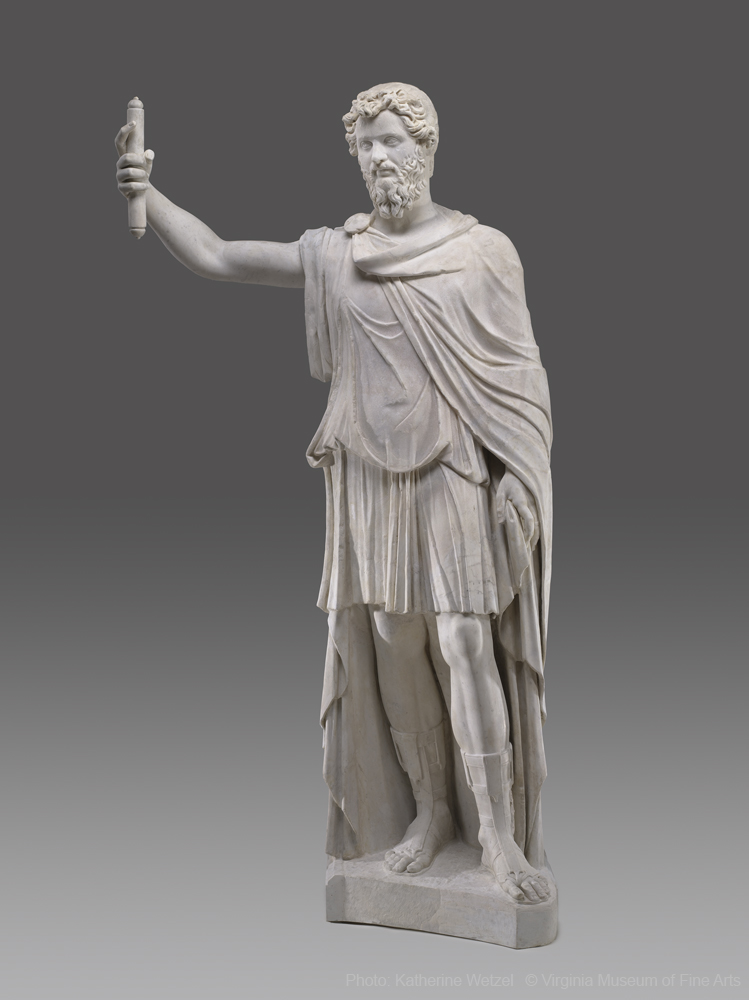
Septimius Severus, ca. 200 A.D.
Virginia Museum of Fine Arts, Richmond. The Adolph D. and Wilkins C. Williams Fund.
Photo: Katherine Wetzel © Virginia Museum of Fine Arts
Born of Roman and Punic stock around 145 in the city of Lepcis Magna in North Africa, Lucius Septimius Severus is sometimes referred to as the African Emperor. He served in both military and diplomatic posts, rising through the ranks until his soldiers proclaimed him emperor in 193, a year of tremendous upheaval in the Roman Empire. Following a period of civil war, Severus instituted military and administrative reforms that stabilized the empire, secured its frontiers, and replenished its treasury. Severus died in 211 in a part of Roman Britain that is now York, England. His two sons, Caracalla and Geta, succeeded him, and his descendants continued to rule the empire until the death of Alexander Severus in 235, bringing an end to the Severan dynasty.
Dozens of portraits of Septimius Severus have survived from antiquity—including works of bronze, marble, and gemstones—and thousands of coins bear his image. VMFA’s portrait has been called the “Marcus Aurelius–Severus type,” after the emperor Marcus Aurelius, who reigned from 161 to 180 and was extremely popular. Severus claimed, probably falsely, that Marcus Aurelius had adopted him. The use of this portrait type reinforced this propagandistic assertion, thereby granting Severus legitimacy by associating him with his much-loved and respected predecessor.